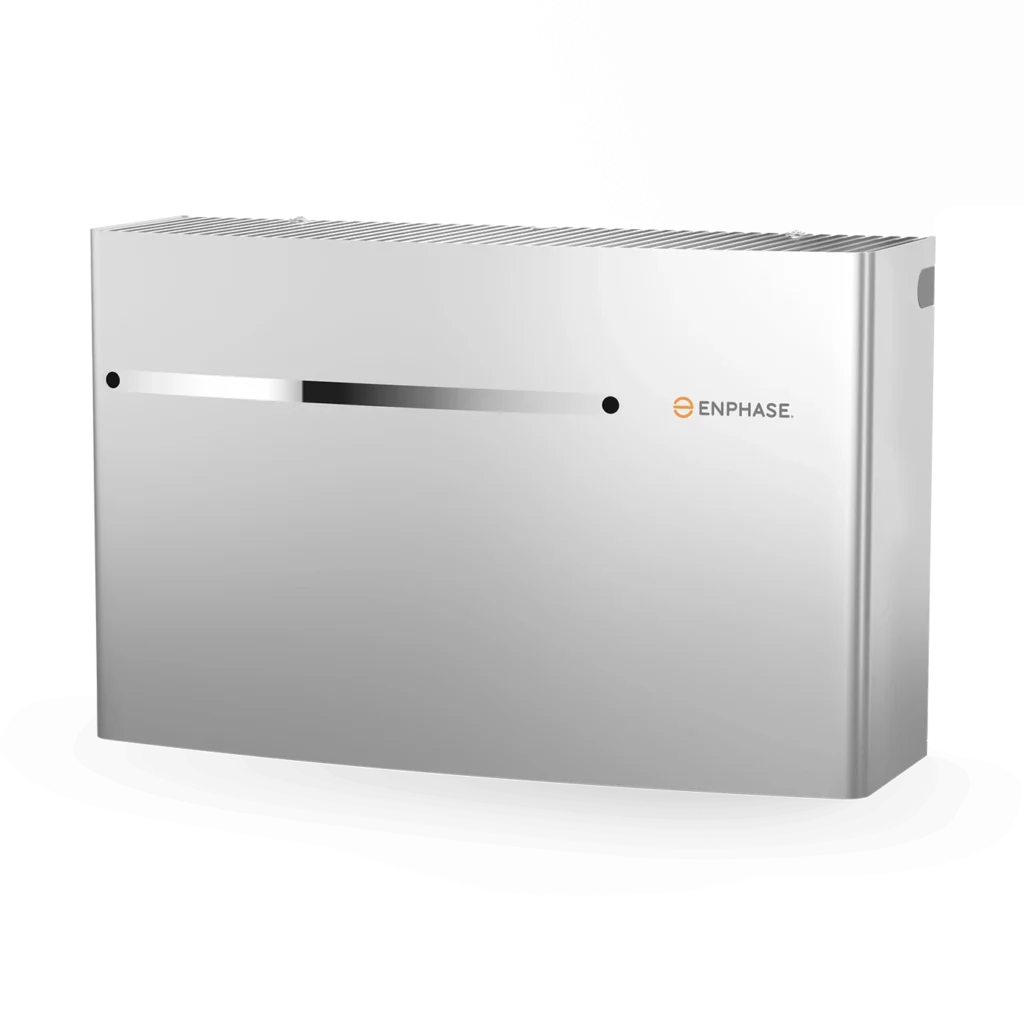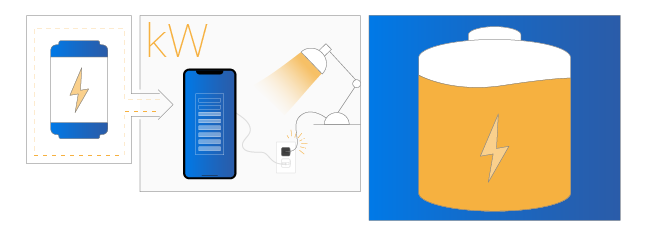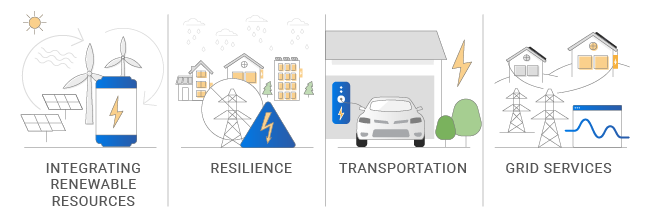At its simplest, an energy storage system works by taking any form of energy produced now, and keeping it for use later. It’s not unlike a savings account, where any money that you earn but don’t need today can be safely held until you need (or want!) it at a later date. Instead of having to produce electricity at the exact times when it’s needed, energy storage allows you to produce electricity whenever to have more flexibility for how you meet demand with supply.

There are two primary concepts to keep in mind when thinking about how to describe energy storage systems: the amount of power they are able to output and the amount of energy they are able to store for use later. One of the best metaphors to conceptualize the difference between the two is to think about running water from a reservoir through a pipe.

The power output of an energy storage system is like the width of the pipe, i.e., how much water you can push through the pipe at a single moment in time. This helps to determine how quickly you can fill up whatever you’re charging, but also how quickly you’ll deplete the reserves of energy you have stored. For energy storage, specifically, power output is listed in kilowatts and influences how many different things you can power at the same time–think phone chargers, refrigerators, AC units, and more.
The energy storage capacity of an energy storage system is like the size of the reservoir of water, i.e., how much water have you saved to use later? This helps to determine how long you can power whatever it is you’re using. Storage capacity is listed in kilowatt-hours, i.e., power over a period of time.
For most storage systems, there’s a limit to how much energy you can store in one system. In order to store more, you’d need additional batteries, for instance. Think about the savings account analogy again: this means that your savings account is capped at a certain amount, say, $1,000. After you’ve saved $1,000, you’d need to spend some of that money to be able to store any excess funds in that account again. Alternatively, you could open up an additional savings account to increase the amount of money you can save (i.e., buying an additional battery).
Additionally, in most cases, electricity cannot be stored indefinitely. Sticking with the savings account analogy from above, where a savings account might accrue interest over time, helping you to increase the size of your savings, an energy storage system might actually slowly lose stored energy over time, and you’ll lose some electricity both when you put it into the system, and when you take it out. It’s as if you have to pay a fee for keeping your electricity stored for a long time, or a fine each time you want to put money into, or take money out of, your savings account.
There are a number of different applications for energy storage systems:

At a large scale, the biggest use of energy storage is to help integrate more renewable energy onto the grid. One of the primary criticisms of renewable energy resources is that they are variable, or ‘intermittent’, and non-dispatchable: renewable resources like wind and solar work produce electricity when the wind is blowing and the sun is shining, but don’t at times when the wind is still and the sun has set. This means that renewables are “non-dispatchable”, since you can’t call on them to produce when you need it the way you can with a traditional, fossil fuel fired power plant.
But energy storage changes this equation: if you store excess produced solar or wind energy, you can then better match renewable energy production to demand. In other words, when paired with energy storage, solar and wind can operate more like a traditional power plant would.
The main reason that homes and businesses install energy storage is for resilience, or emergency backup power. If the electrical grid goes down for any reason, whether due to a major storm or utility shutoff, an energy storage system can keep your lights on even when all the other homes in your neighborhood are dark.
It’s possible, too, to use energy storage to keep more than just your home or business running during an outage: with a large enough storage system, or with a microgrid, you can actually keep an entire neighborhood or city block powered, even when the rest of the grid is down.
While it’s possible to go fully off-grid, it’s normally far too expensive to be financially feasible: you’ll need to overbuild both your solar and your storage systems, and then change your consumption habits to be extra sure that you’ll have electricity all the time. In reality, when someone says they want to go off-grid with solar and storage, what they’re really looking for is resilience in the event of a grid outage. While that’s not the same as being “off-grid” entirely, energy storage does allow you to operate without the grid.
As batteries become more affordable and more energy dense, they are increasingly able to replace internal combustion engine cars with electric vehicles that can travel a similar distance on a single “tank”, or charge. The ability of electric vehicles to truly replace existing cars will only accelerate as their range increases and as the amount of time it takes to charge them decreases.